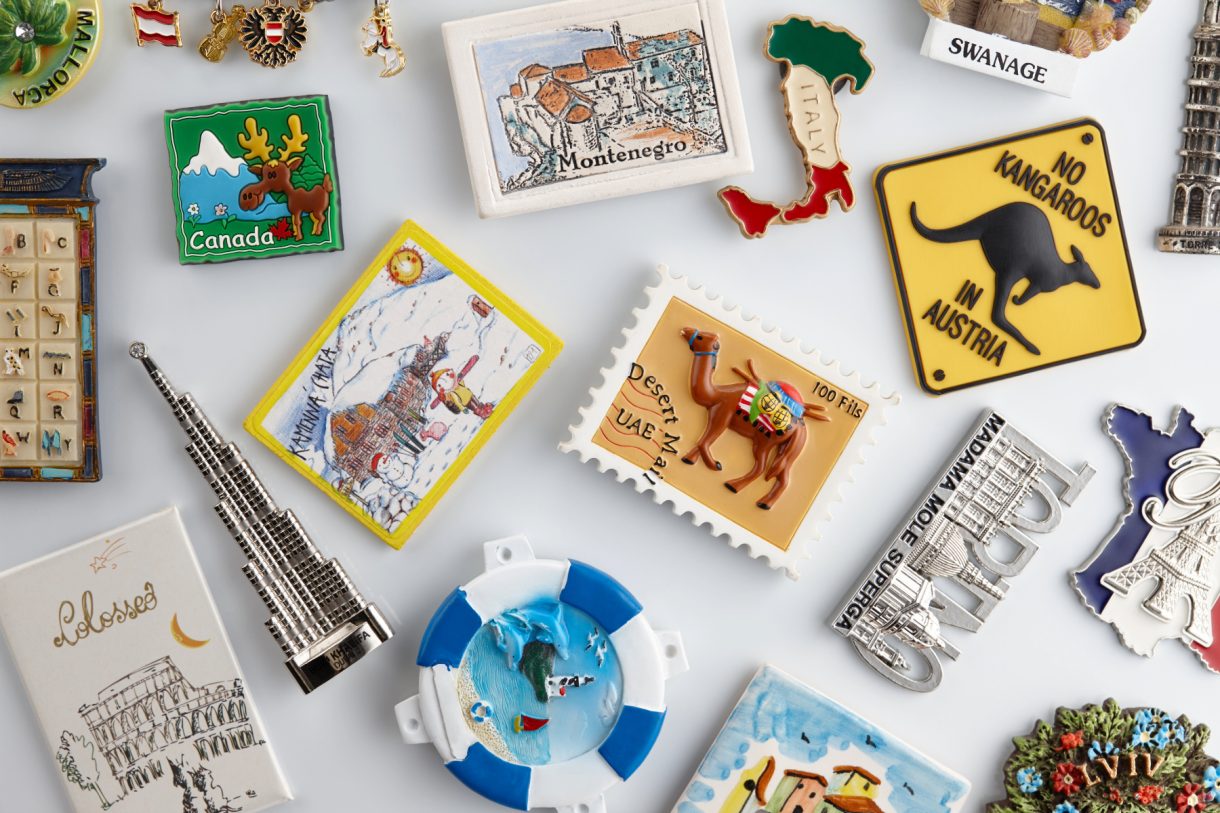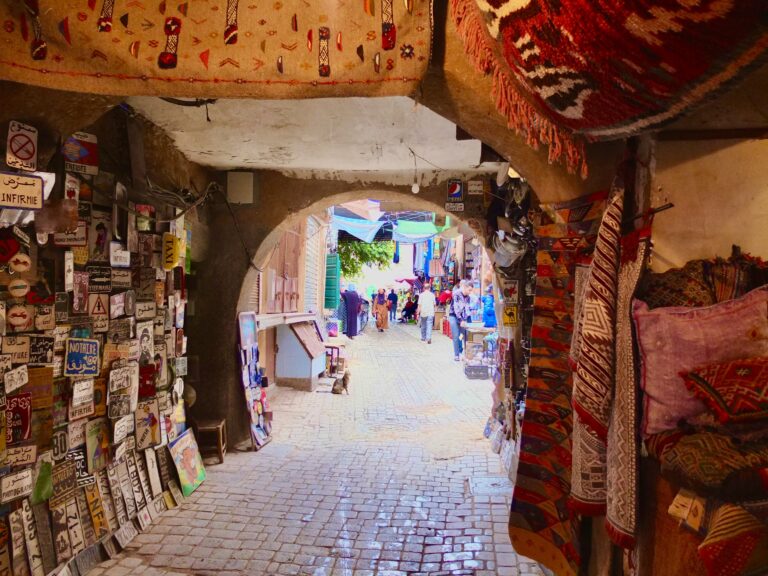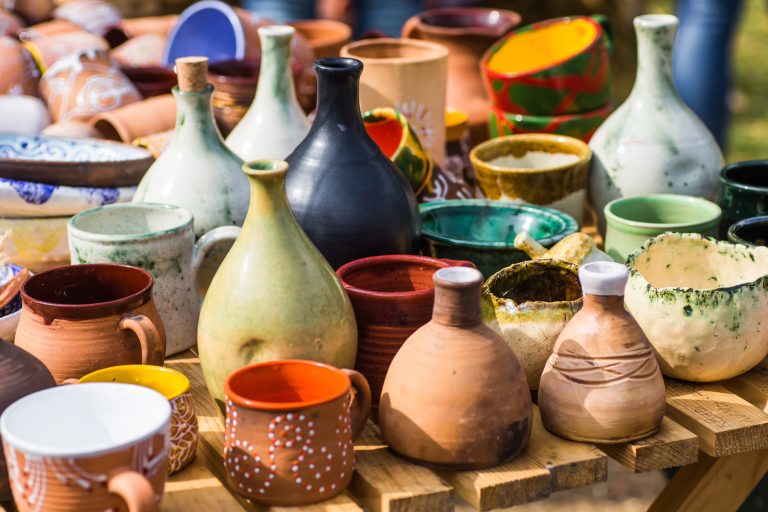
Your Guide to Sustainable Souvenir Shopping
Souvenirs are more than just trinkets. They are a small piece of the places we visit, serving as reminders of our travels, memories of the fun we had and the times we pushed ourselves outside of our comfort zone. But with this sentimental value comes the responsibility to choose wisely. Here’s your guide to making sustainable souvenir choices that not only enrich your travel experience but also benefit the places you visit.
WHY DO WE BUY SOUVENIRS?
Souvenirs often hold a deeper meaning. They can be tokens of our adventures and reminders of our journey, experiences, and personal growth. Or maybe they’re just a cute thing you saw, and you’d budgeted for a little shopping! Souvenirs can also be a way to share a piece of our adventure with others or just a small token of appreciation to thank them for caring for our pets and plants while we were away.
A well-chosen keepsake can evoke fond memories and create lasting connections with our travels. From local crafts to unique finds, the charm of souvenirs lies in their ability to encapsulate the essence of a place. But why is it so important to buy sustainable souvenirs?

THE ISSUE WITH SOUVENIR SHOPPING…
Every item we purchase is still on the planet. There’s no such thing as throwing something ‘away’. Even if an item is out of our life, it’ll be somewhere, whether that’s (best case) being cherished by somebody else, in a charity shop or (worst case) in a landfill.
Unfortunately, not all souvenirs are created equal. Some can even be downright problematic. That’s why it’s so important to buy sustainable souvenirs! The most problematic souvenirs are:
#1 MASS PRODUCED SOUVENIRS
Mass-produced items, like cheap magnets and keychains, are often manufactured far from the location where they are sold. These products are sold incredibly cheaply. But if the cost is low for you, someone else is paying for it. And, as with fast-fashion, that cost is usually passed on to someone down the production chain.
Mass-produced, budget souvenirs are typically manufactured in high-volume factories under questionable labour conditions. Workers in these factories might face long hours, low wages, and poor working conditions—all to meet the demand for inexpensive, impulse-buy items.
These souvenirs are usually sold at a low price point, appealing to the impulse buyer. However, many end up discarded or donated to thrift stores, contributing to a cycle of wastefulness. These mass-produced items, which rarely offer any real connection to the place they represent, often become clutter rather than cherished keepsakes.
Now I’m not saying don’t buy magnets or keychains. I know so many people who love to collect and display magnets, for example. If these things genuinely make you happy and will be loved and cherished, don’t be put off from buying them.
#2 ‘NATURAL’ SOUVENIRS
Growing up, friends and family members had bathrooms full of ‘natural souvenirs’, like dried starfish, bottled sand, and large, beautiful shells. In addition to wowing me as a child, these seemed like perfect reminders of holidays spent on beautiful beaches. But collecting this type of souvenir can have negative environmental impacts.
- If everyone took away shells and sand from the beach there wouldn’t be any left! Shells provide a habitat for marine creatures (like hermit crabs!) and are important to the health of beaches and reefs. They need them more than we do!
- Nature takes a while to replenish. Buying dried up sea creatures or shells is just supporting the market, and encouraging sellers to go out and collect these to make an income, which contributes to environmental degradation. Everyone starts selling these type of souvenirs, which upsets the balance of the ecosystem and can lead to long-term damage to natural resources.
- It’s usually illegal! Most countries have regulations to stop you from exporting dried up starfish, ivory, or pieces of turtle shell. These regulations are in place protect local wildlife and ecosystems. Ignoring these regulations can lead to hefty fines.

BUT I STILL WANT A SOUVENIR! WHAT SHOULD I DO?
Don’t worry! I’m not telling you to stop buying souvenirs altogether. I love finding the perfect souvenir as much as the next person. I just want to encourage you to be mindful when you do buy something…
Here are our favourite ways to shop for sustainable souvenirs on your travels:
#1 BUY THINGS YOU WILL USE AND CHERISH
The first step to sustainable souvenir shopping (or anything you buy really) is to buy things that you will use and cherish. Before you purchase something, ask yourself a few simple questions:
- Do I love this item? Will I still love it in a year?
- Will I use this item? How will I use it? How will this item fit into my life back home?
- Will this souvenir last, or is it poor quality (I’m looking at you, ‘Southeast Asia elephant trousers’ that are a rite of passage for first-time travellers)? Will it fall apart the moment I get home?
We’re all different, so what we choose to buy and enjoy won’t look the same for everyone. I can’t tell you what you should and shouldn’t buy to remind you of your adventures. But here are some examples of souvenirs I’ve purchased on my travels that I still love and use years later.
- A handmade rug from the Atlas Mountains in Morocco. This traditionally woven wool rug was not cheap (I was a student, and could barely afford the trip in the first place). But I loved it. I bought that rug in 2017 and somehow managed to get it in my budget airline hand luggage. And it’s still sitting in my office as I write this post, all these years and many apartment moves later. My partner just came back from a solo adventure to Morocco and bought an equally beautiful rug for our hallway.
- A traditional tea pot from Poland. The apartment we stayed in in Wroclaw looked out over a shop full of traditional hand-painted pottery. After admiring them for a few days, I decided I wanted to bring one home! I use all the time, as it’s big enough for when friends and family visit and we all want tea.
- Our hand woven hammock from Nicaragua. One of my favourite things to do in Central America was lounge around in a hammock after a long day. We visited a social enterprise in Nicaragua which was set up to help local people with disabilities learn a trade and find employment. I loved their mission, and I still enjoy and use the hammock we bought here.
#2 GET CREATIVE
Get creative in your souvenir shopping. Have a think about what the country you’re visiting is known for. For example, Italy is known for producing fine leather goods and excellent olive oil, Scandinavia is known for its cosy knitted sweaters, and India or China known for their tea. Try to pick up something you won’t find anywhere else.
One of my most creative souvenirs was buying wool from Iceland. I really wanted a traditional Icelandic sweater, but the £300 ($350 USD) wasn’t in my budget and I didn’t love the colours of the ones I saw. Instead, I bought yarn to knit one myself in a pattern and colour I like, and it’s one of my favourite souvenirs ever.
Other creative souvenirs I’ve picked up recently include a leather wallet from Italy. I desperately needed a new wallet (mine was falling apart) and now I have one that reminds me of a beautiful trip. We also purchased a moka pot from Italy. Italians love their coffee. And if you’ve been to Italy, you’ll know that most Italians use a moka pot at home to make delicious stovetop espresso. My moka pot is a fond reminder of our time in Venice. I use it at home, and take it when we go camping as it’s super small and transportable. And I think of Italy every time I use it!
#3 THRIFT YOUR SOUVENIRS
One of the most sustainable ways to shop is to buy secondhand! You can find so many cool and unique souvenirs in thrift shops and flea markets around the world, saving you money and saving the planet at the same time. My only problem with thrifting is I always fall in love with furniture at flea markets… which I absolutely can not take back home with me!
Secondhand shopping requires a bit of imagination, but thrift finds can make great souvenirs and even greater gifts. Think of this: some secondhand handpainted ceramics from a flea market (almost good as new) with a bottle of lovely olive oil as a gift for the friend that house-sit for you while you were away? Or a gorgeous Scandinavian wool jumper for your mum, one that cost you £30 instead of £300.
Some of my favourite thrifty finds I’ve purchased on my travels include:
- A beautiful wool coat in Paris! I needed a new winter coat as mine was super worn out, so I decided to spend a day browsing Paris’ famous flea markets and hit the jackpot!
- A chunky wool jumper in Ljubljana. The temperatures in late August plummeted from a gorgeous 35°C (95°F) in southern Germany and Italy, to September snow in Slovenia and Austria just two weeks later. I’d foolishly only packed summer clothes, so this was essential to keep me from freezing! I still wear this jumper back home too.
- A cheap film camera in Edinburgh. I wanted to dive into film photography but didn’t want to drop a load of cash on a new hobby, I already have far too many hobbies as is! I picked up a cheap, basic film camera at a flea market with no idea if it worked. It does, and it’s lightweight and a lot of fun! I took it on our 3-month trip to Central America for my ‘one-photo-a-day’ challenge. It was tons of fun getting these developed back in Scotland for a daily highlight reel of our adventures.

#4 SUPPORT LOCAL MAKERS
If you want to shop sustainably, try to choose locally-made souvenirs, which benefit both you and the communities you visit.
When you purchase from local artisans, you’re contributing directly to the local economy. This ensures that your money supports the people who live and work in the area. It encourages sustainable economic development.
Local artisans often create products that are deeply tied to their culture and traditions, and they do it with pride. These items are unique and carry a story and authenticity that mass-produced goods lack. They’ll also be made to last. Whether it’s hand-carved wooden figures, locally-produced textiles, or handmade pottery, these souvenirs are crafted with care and skill, offering you a genuine piece of the local culture.
#5 BUY THINGS YOU CAN CONSUME
I love to bring back consumable souvenirs, such as local wines, handmade chocolates, fun, new spices, or bags of tea leaves or coffee beans from a trip! Not only do these provide a memorable taste of our adventures, but they also make great gifts! A
These items can be enjoyed at home, shared with friends and family, or used in cooking to recreate the flavours of your travels. The best bit, is you’ll likely use these things up! And every time you do, it’ll feel extra special. No saving things for ‘best’ here. Life is made for living and every day is a day for celebration, so crack open the nice chocolates, use the fancy spices to try recreate some of your favourite dishes from abroad, drink the tea that you bought, and enjoy!
#6 AVOID THE URGE TO COLLECT
Ahh, collections. We’ve all had at least one in our lives. I was a sucker for pin badges as a child, and would collect them from every single place I’ve been… which resulted in a board of pins I have nothing to do with now! And I can’t donate them because i’m far too sentimental!
While it’s tempting to collect souvenirs from every place you visit, accumulating items for the sake of collecting can quickly become unsustainable. Often, these collections are impulse buys – things like magnets, keychains, or trinkets – that end up cluttering shelves or drawers, rarely used or appreciated.
Over time, the sentimental value can fade, leaving behind a pile of objects that contribute to waste. Instead of collecting for the sake of having something to represent each destination, consider curating meaningful items that truly resonate with your experiences.
By focusing on quality over quantity, you can create a deeper connection to the places you’ve been, whilst also reducing clutter and minimizing your environmental impact.

5 TOP TIPS TO FIND SUSTAINABLE SOUVENIRS
- Seek Out Local Markets: Visit local markets and artisan shops to find handmade, authentic souvenirs. These places are usually filled with unique items that reflect the region’s culture and craftsmanship.
- Research Before You Buy: Look up local artisans and craftspeople before your trip. Many regions have online directories or guides showcasing local talent and their shops.
- Consider the Impact: Think about the environmental and social impact of your purchase. Opt for items that are sustainably sourced and produced.
- Avoid Impulse Buys: Take time to choose souvenirs that have personal significance and are likely to be cherished. Avoid items that are purely decorative or likely to end up forgotten in a drawer.
- Ask Questions: Don’t hesitate to ask about the origin of the products and the conditions under which they were made. Transparent businesses are more likely to engage in ethical practices.
If my content helped you plan your next adventure, taught you something new, or simply made you smile, consider supporting the site! A small donation helps keep this blog going, fuels my creativity, and maybe even buys me a coffee along the way. Thank you for being here and being part of this journey! 😊
Follow our daily adventures on Facebook and Instagram
Disclaimer: The information and advice provided in this blog are the author’s opinions and based on their personal experiences. All information was accurate at the time of writing. However, things can change quickly, so always double-check current conditions and guidelines before setting out. Remember, your travels and safety are your own responsibility, and this blog can not be held responsible for anything that might happen on your adventures! Always exercise caution and good judgment. Oh, and don’t forget to get travel insurance! Happy travels!
This post may contain affiliate links (yay for transparency!) This means that I will earn a small commission, at no additional cost to you, if you click the link and choose to buy the product. I only link to stuff I have personally bought and found useful and never endorse crap. Your support helps keep the site going, thank you!
Alice
Alice is a UK travel blogger who advocates sustainable travel and being more eco-conscious on a budget. She loves coffee, her houseplants and summiting mountains.
